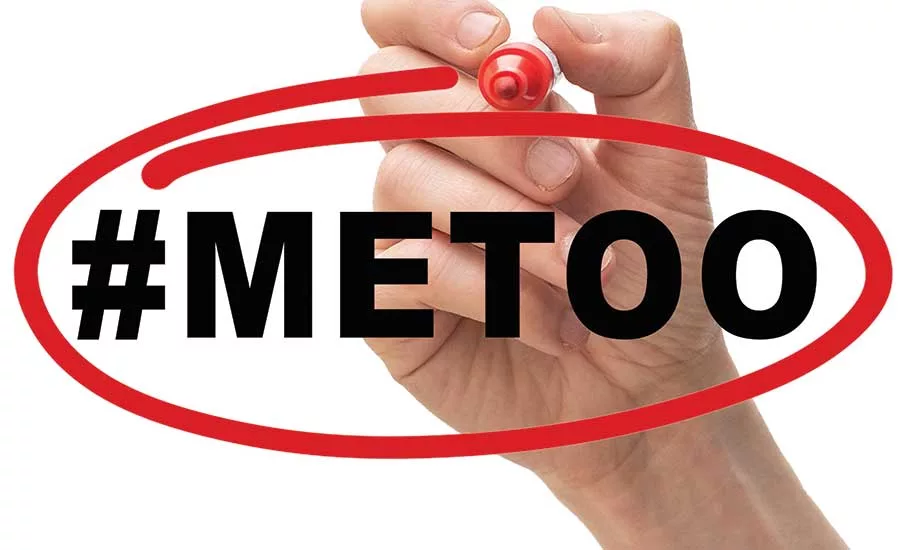#MeToo and You: Business Owners Big and Small are Facing Sexual Harassment Claims

The tsunami of sexual harassment allegations that has engulfed so many rich, famous and powerful men raises a fair question — How will this affect the workplace of the not-so rich and famous?
The tsunami of sexual harassment allegations that has engulfed so many rich, famous and powerful men raises a fair question — How will this affect the workplace of the not-so rich and famous?
These incidents are usually more mundane than the outrageous conduct reported recently involving Hollywood and the halls of congress. The most frequently reported complaints generally revolve around a sexually hostile environment created by one too many sexually explicit comments or jokes.
On occasion it may even involve unwanted touching. Unless there is some astronomical legal judgment against an offending employer, these incidents are never the subject of television news. The more significant issue is why do such incidents continue to occur in any workplace.
Most employers have had anti-harassment policies for years. Many did so in response to the 1998 landmark decisions of the U.S. Supreme Court in Faragher vs. City of Boca Raton and Burlington Industries, Inc. vs. Ellerth. While these cases involved claims of supervisory sexual harassment, they’re significant because they set out the critical elements for an employer’s affirmative defense in sexual harassment cases. The Court mandated a standard of reasonable care on the part of employers that could be met by showing that the employer had an anti-harassment policy, trained employees, and took prompt action upon receiving complaints.
What is Sexual Harassment?
The Supreme Court has defined sexual harassment as taking one of two forms. “Quid pro quo” harassment is one in which submission to the harassing conduct is made a condition of employment. The second form of sexual harassment, the much more common form, known as a “hostile environment” involves conduct so “severe or pervasive” that a reasonable person would not tolerate it.
An isolated or single incident of sexually explicit comments or conduct, such as unwanted touching, would not be considered unlawful in most circumstances. However, given the hyper-active climate regarding sexual harassment currently, the severe or pervasive standard will likely be tested, if not eroded.
Both forms of sexual harassment are prohibited conduct under the federal anti-discrimination law, in existence since 1964. Victims of proven sexual harassment can sue their employer for damages as well as their attorney’s fees. In recent years, especially in such litigation prone states as California, judgments against offending employers in a few of these cases have been in the multi-million dollar range. But even large dollar judgments may pale in comparison to the long-term financial loss of customer or client goodwill for an employer found to have permitted sexual harassment to occur in their workplace.
Addressing Sexual Harassment
Given the potential costs involved for a proven case of sexual harassment, one would think that taking all necessary steps to prevent it would be one of the highest priorities. The reality is that for most employers, until they’re confronted with the prospect of a legal judgement against them, simply having a no-harassment policy and doing only that training mandated by some state laws is the only action they take. Some employers haven’t even taken the fundamental step of adopting an anti-harassment policy. The effects of such gender discrimination include the departure of well-qualified and productive women from the workplace, creating the need to hire and train replacements. It can also have significant financial consequences aside from legal judgments by its impact on productivity, team morale, and employee turnover in general.
If the workplace environment is to reflect that no harassment of any type will be tolerated, that message must come from the top. Sexual harassment must be taken seriously by all managers and others in position of authority. Company leaders must ask themselves whether they’re fostering a culture that breeds harassers or thwarts them.
Assuming that employees truly understand what sexual harassment actually encompasses may be in error. One would think that because of all the recent attention to the topic, everyone has a clear understanding of what conduct could violate an anti-harassment policy. However, the fact that sexual harassment claims have continued to occur in every type of workplace seems to confirm a lack of true understanding on the part of many employees. The best way to clarify any lack of understanding is to clearly define sexual harassment, including examples of the types of behavior that is prohibited. It’s critical that everyone understand that it doesn’t always include unwelcome sexual advances or unwelcome touching. They must recognize that offensive remarks about a person’s sex, male or female, or other verbal or physical harassment of a sexual nature, is fully covered by the term. Similarly, it must be clear that male-to-male or female-to-female sexual harassment is equally prohibited.
Conclusion
The flood of recent scandals involving sexual harassment shows that companies can no longer merely put an anti-harassment provision in their handbook and do the bare minimum required by the law to prevent harassment. Employers must actively look for ways to fight sexual harassment in the workplace. Businesses that fail to adapt, turn a blind eye towards inappropriate behavior, or encourage employees to “work the problem out amongst themselves” are laying the framework for a lawsuit and creating a culture that will harm their business.
Looking for a reprint of this article?
From high-res PDFs to custom plaques, order your copy today!






